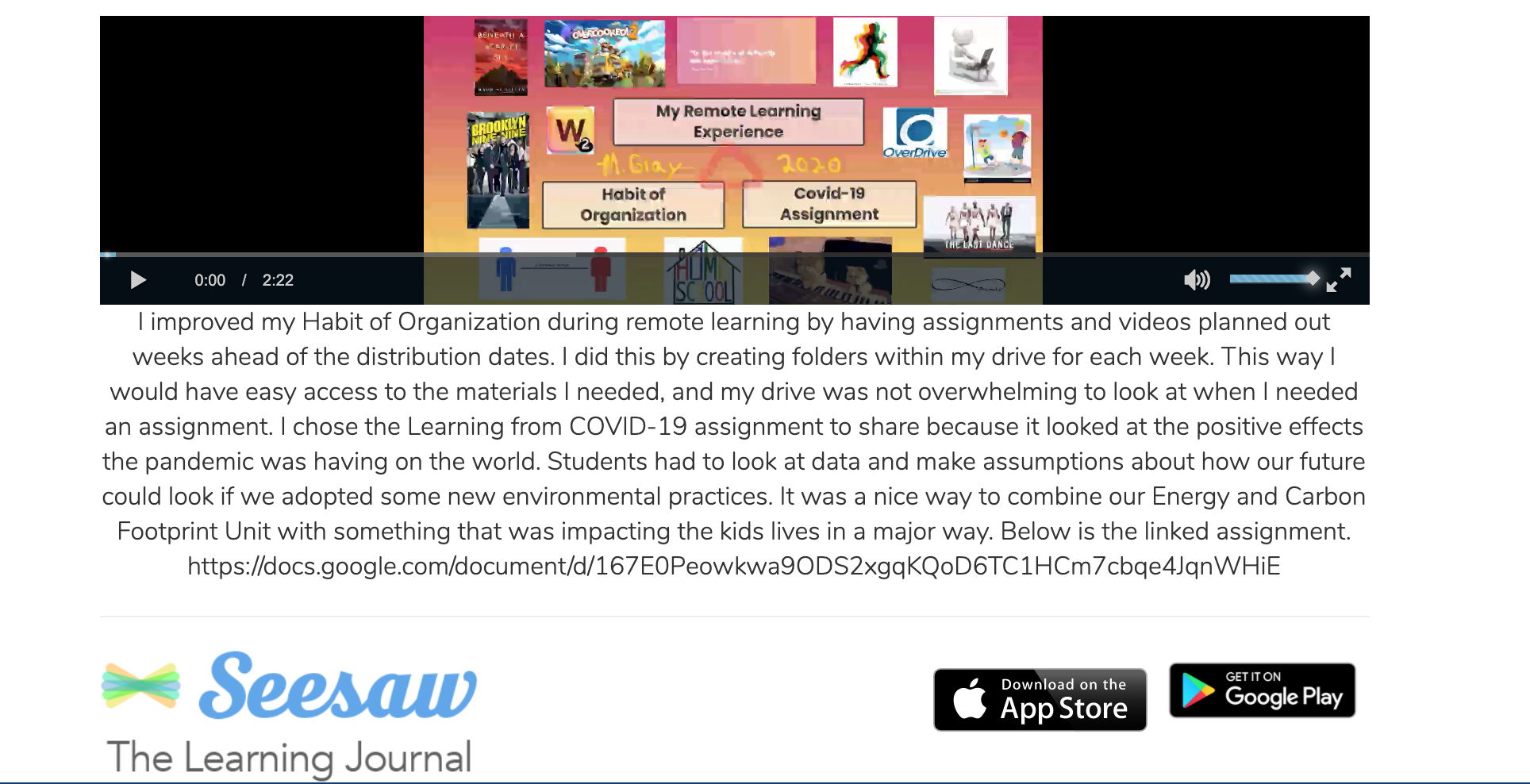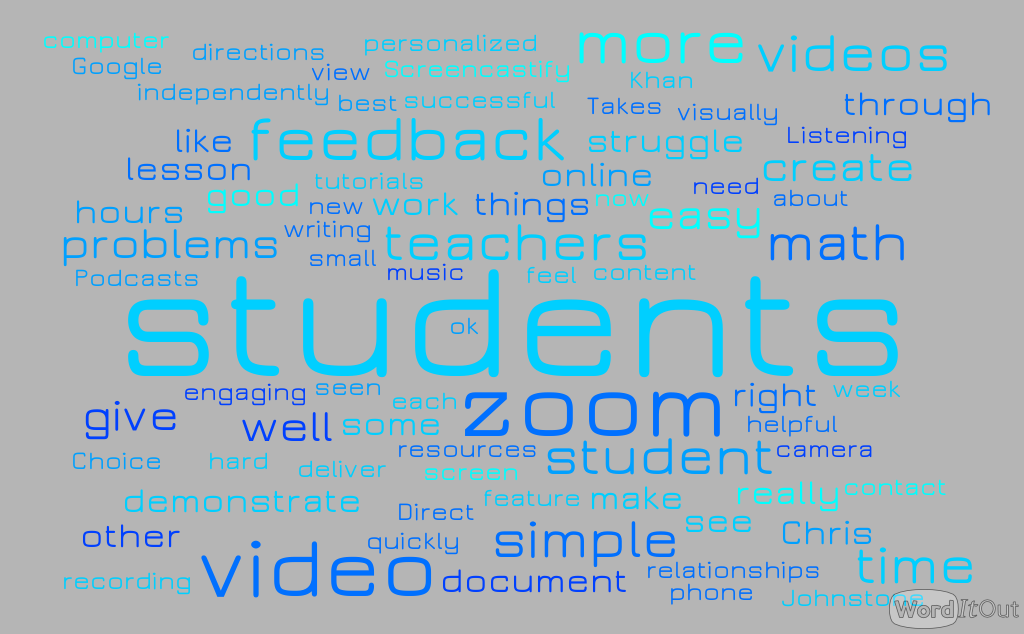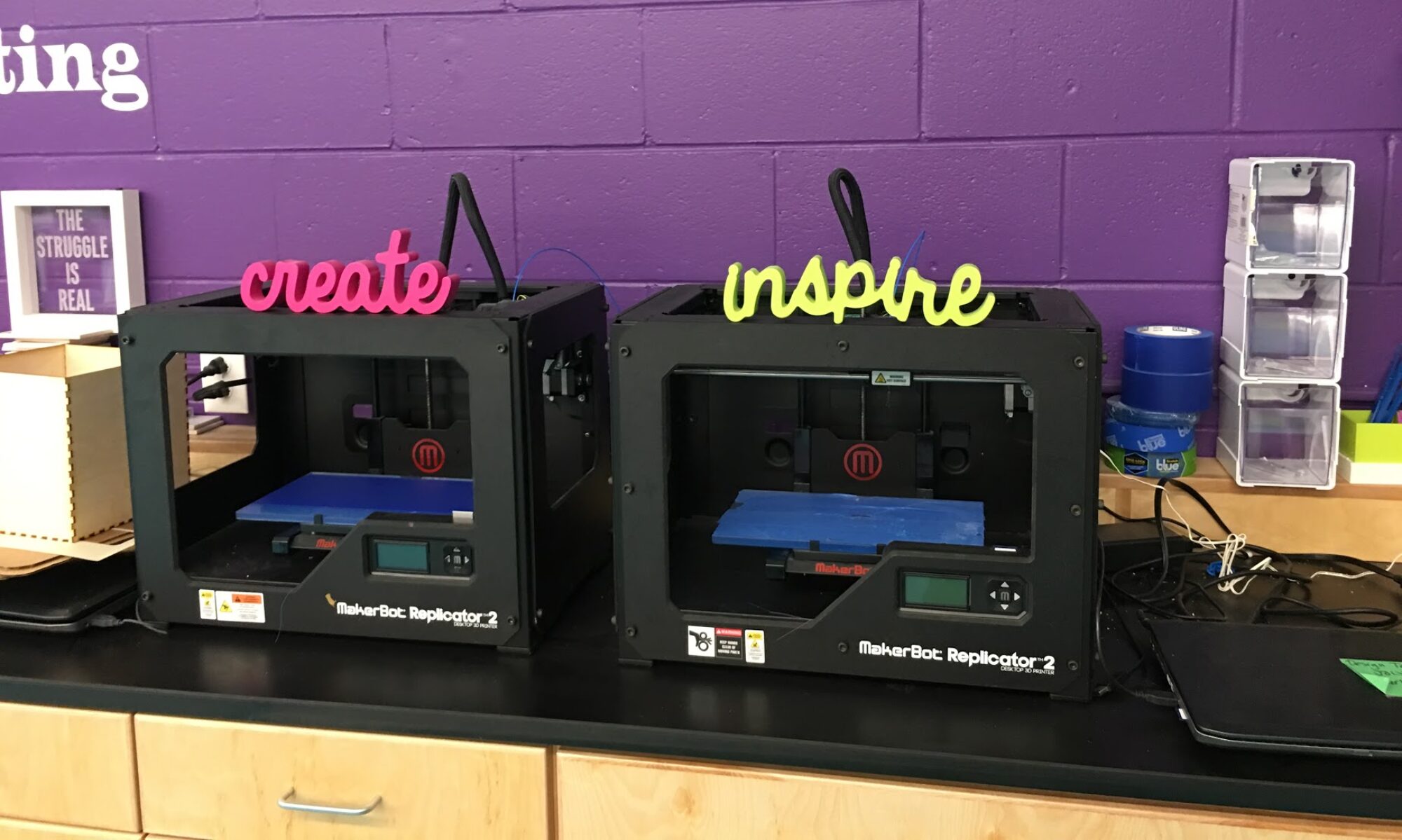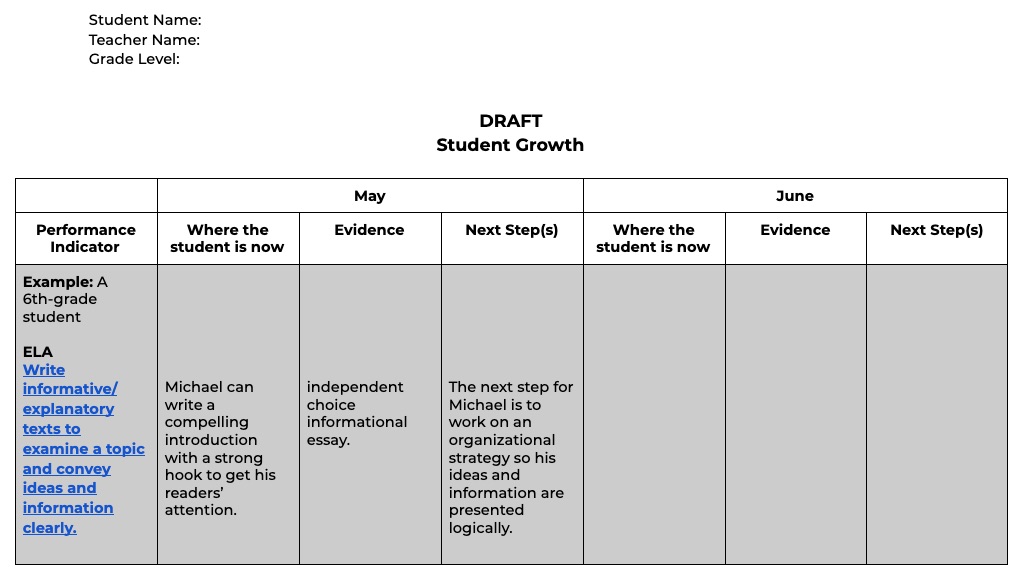Ah, the end of a school year. Always frenetic, and beautiful, and tear-filled and inspiring. Filled with rituals that educators and schools have developed with and for their community to bring closure.
And now, this year.
How can we develop new rituals or modify existing ones to honor everyone’s hard, hard (hard) work at the end of this particular year?
We can respond by taking what we know works, and fitting it to the tools we still have on hand in spades: kindness, curiosity, courage and the genuine excitement of meeting this important milestone once again.
1. Student reflection
End-of-year reflection allows students to consolidate their learning.
It allows them to document their learning to share with their communities. And in the current moment, it is a vital process that allows everyone to process their emotions and prepare for the transition to summer break.
Teachers learn so much from these final reflections — what has worked well and what needs fine tuning. Families find out more about who these wonderful creatures in their home really are. And in some cases students add a capstone piece to their PLPs for the year.
Schools such as Burke Town School, in West Burke VT, have used online student led conferences as a way to wrap up the year.
Or if this feels like too much, perhaps consider the toned-down student-led check-in. “Informal conversations that connect school, home, and student” that can pivot around these prompts:
- What are you most proud of from this school year and why?
- Where do you think you’ve shown the most growth?
- What are your goals for next year?
- How can your family and teachers better support you?
Coordinating conferences or check-ins does bring a host of logistical issues. There are many different ways to frame student reflection within the context of a class or team. Check out the six ideas shared by Facing History and Ourselves:
- Final journal entry
- Digital portfolio
- Notes of appreciation
- Digital goodbye graffiti board
- Hopes and fears related to summer
- Email to self
You know your students and what will work for them in this moment in terms of depth and format. Even a very simple and low-key prompt or activity can promote reflection and inform your planning for next year.
2. Celebration
One of the most amazing things about this current time is the creativity some educators and leaders have shown in bridging the distance to celebrate their students. John Craig, assistant principal at South Burlington High School, in South Burlington VT, has a joy that cannot be contained.
Literally.
He is out and about (safely and masked up), driving to his students’ homes and making joyful noises right outside.
Now, many of the existing traditions from your team or school may translate into remote environments with a bit of a creative twist.
Snail-mail a surprise for each student to open together at a virtual gathering. One of the five ways to end the school year remotely from Maneuvering the Middle is to mail awards home and have students open them at a virtual gathering.
Don’t discount the virtual exhibition of learning. If students are working on long term projects or products, you can still have an exhibition! Online culminating events can still be a go.
Looking for a meaningful 8th grade graduation? Many of the ideas in this edutopia post related to high school graduation are applicable to middle school as well. Lyndon Town School is looking at the possibility of a car parade while Frederick H. Tuttle Middle School is compiling a video.
At Randolph Middle School, the 8th grade team developed The Last Hurrah mini-project. Students develop a one page reflection with photos, quotes, and reflection on learning. These will be compiled as a sort of digital yearbook that will serve as a collective celebration.

One last note about these celebrations: bring thoughtfulness and creativity to making sure that all students are included. Students with disabilities, students without internet connectivity, students who have been less than fully engaged with remote learning, etc. all need to participate to make this a truly collective celebration.
3. Transitions
For transitions into or out of middle school, the Association for Middle Level Education has some guidance. Some of their practical tips include arranging student or adult mentors for transitioning students. They also mention the possibility of current students writing letters or emails to incoming students, which would be a form of student reflection as well.
This year will be different and more difficult, but it is important to try to make the best of it in order to provide students with some semblance of closure.
4. Grading & assessment
Yes really.
Now, grades communicate to students and families the educator perspective on where each student is at the end of the year. They are, right or wrong, their own particular form of closure.
But assessment? That’s where you as an educator can tell your student in detailed terms what their learning journey has meant to you. You can bring your knowledge of each student, the amount of time and effort you’ve seen them bring to your classroom and to this hard moment, up to the light. You can present that feedback to them and their families as a kind of portrait of who that student is right now, in this time.
And right now? It’s especially important to show that students are seen, known, and cared for.
Grades-wise, there is widespread consensus and guidance from the Vermont Agency of Education to “hold students harmless” during remote learning. For elementary and middle schools, this means that letter grades or proficiency scores are unnecessary right now. Many schools are using pass/incomplete determinations with the assumption that students will receive “incomplete” in only the most extreme circumstances.
Most schools are including some sort of narrative or comments for each student. These can be on a narrow range of indicators, as shown in this example from the Two Rivers Supervisory Union:
Or the feedback can be more holistic.
Districts and schools can frame the end of year reporting in a way that does not overwhelm teachers while helping them focus on what’s most important.
At Frederick H. Tuttle Middle School, in South Burlington VT, teachers are given two half-days to write narrative comments for each student.
The teacher leadership team worked with administration to create a guidance document that laid out the purpose, rationale, expectations, and supports for the end of year narrative comments.
The Kingdom East School District built support for teachers right into the Educational Engagement Summary template. The template provides guiding questions and links to external resources. It notes that the purpose is to “celebrate our students and show parents/caregivers that we have been care partners in wellness and education during this remote learning time.” At the middle school level, teacher teams can decide whether to write a holistic narrative or to provide subject specific feedback.
And these comments can be personal and heartfelt. Now is the time, today is the day: tell the student what you’ve seen of them as a learner, as a do-er and as a try-er.
Draw on student reflections to mirror what students are noticing and feeling. It will make those students feel seen.
5. Educator reflections
We know you didn’t get a lot of notice before we all went into this emergency distance learning dance. But now that we’re moving out of it, into summer, there’s space to process the highs and lows of the last few months. This is helpful on a basic emotional level but also to inform what you might want to keep or change when school starts again. In whatever form that takes.
In some cases this reflective moment will be an individual one, such as through the evaluation process. Or it may be through informal conversation with a trusted colleague. It can be purely private via a journal or scrapbook.
As a community of educators, you can think about and discuss what has been working for remote learning. A survey can work well for this, both to check in on needs and also surface thoughts on what has been successful or which practices are worth keeping in the fall.

Conversations on this can be vital.
At Bethel Middle School, during a virtual staff meeting teachers were provided with time to create a slide that responded to two prompts
- When did you feel at your best when teaching in a remote environment? And what should we carry forward?
Then the facilitator opened up space to have a conversation. The “what’s working” portion generated positive energy and reminded everybody that their hard work and steep professional learning curves would have benefits in the future. The responses were summarized so that they could inform planning for next school year.
We hope that educators reflect on the way that we’ve have collectively reprioritized relationships and equity. Educators have gone to great lengths to stay connected to students. Schools have brought creativity and urgency to ensuring that systems are in place so that no students are slipping through the cracks in terms of what they need for mind and body.
May that energy continue, no matter what comes next.
Give yourself credit
Alex Shevrin Venet provided some amazingly helpful advice at the beginning of this emergency remote learning period: educators should take care of themselves first, so that they have the emotional capacity to provide students with what they need.
As this school year wraps up, we hope educators will exercise self-care by processing what we’ve all been through and giving themselves full credit for their amazing learning and accomplishments.
You should be proud of everything that you’ve accomplished in getting to the end of this year, no matter what.



